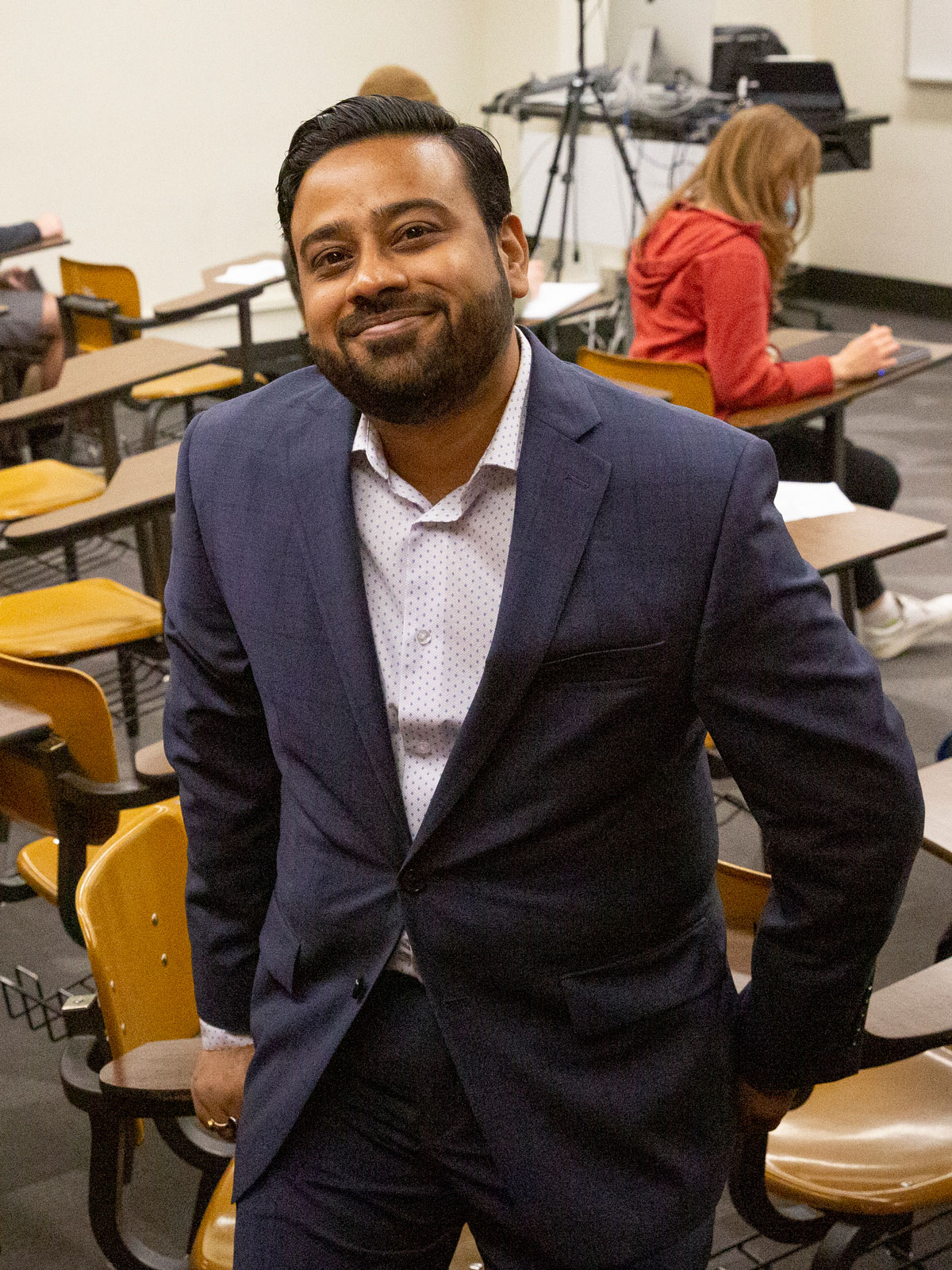Ironing out the details of steel microstructures

Arizona State University Assistant Professor Kumar Ankit holds a steel ball bearing. Steel processing methods to create objects such as ball bearings affect the material's microstructure and properties, but the mechanisms behind these changes are not well understood. In a National Science Foundation CAREER Award-funded research project, Ankit is leading the first integration of computational, experimental and characterization techniques to add new knowledge of steel microstructures to his field and optimize the future of steel manufacturing. Photo by Erika Gronek/ASU
Steel has been the backbone of infrastructure and industry for more than 150 years. From construction to power generation to the automotive industry, steel’s use in almost every aspect of our lives worldwide is only increasing.
“Although steels have been used and studied for many generations, understanding how different processing conditions specifically impact steel microstructure (how the material components are arranged) is somewhat limited. This is particularly the case in commercial steels, where complex chemical compositions make it difficult to understand what is occurring at the atomic level,” says Kumar Ankit, an assistant professor of materials science and engineering in the Ira A. Fulton Schools of Engineering at Arizona State University.
Ankit is conducting heating and cooling experiments, and using computer simulations and 4D imaging, to investigate the relationship between how steel is made and the resulting microstructures in multicomponent steels. His innovative efforts have earned a National Science Foundation Faculty Early Career Development Program (CAREER) Award, which offers $560,000 to support five years of research.
The award, which is given to early career faculty members who are potential leaders in research and education in their fields, emphasizes the importance of this work to the steelmaking industry.
“Establishing these relationships will enable microstructure-level control in the manufacturing of steel components to obtain desired mechanical properties, which is currently a missing piece of knowledge in steelmaking,” Ankit says.
In its most basic composition, steel is iron with up to 2% added carbon to increase its hardness. Different types of steel have their elements arranged in varying structures at the atomic level depending on the manufacturing process and which additional elements have been added.
Manufacturing methods have changed over the decades, with the most recent pioneering research in steel metallurgy occurring in the 1980s. At that time, however, advanced modeling tools and characterization techniques, such as those used in Ankit’s Laboratory for 4D Interface Control and Engineering, had not yet been invented.
“The lack of reliable modeling approaches and in situ imaging techniques in that era often led to fundamental gaps in our understanding of the microstructural evolution mechanisms in the processing of steel,” Ankit says, noting this is especially the case when steels include elements in addition to iron and carbon.
Assistant Professor Kumar Ankit
Ankit is interested in studying what happens in the processing of steels with a “pearlitic,” or layered, microstructure. These steels are hard and strong, which makes them useful for railroads, drawbridge support cables and cutting tools — applications where strength is critical. For other applications in which steel needs to be softened and formed into complex shapes, such as ball bearings, the necessary processing conditions can impact the steel microstructure and change its properties.
Ankit’s research team will investigate pearlitic steel models composed of three or four elements (iron, carbon and silicon or manganese) through heating and cooling experiments that will examine how the steels behave at 2D, 3D and 4D levels, with the fourth dimension being time. The team will integrate computational modeling techniques as well as microscopy, spectroscopy and diffraction characterization to better understand how these processes affect the microstructure.
The reaction that forms pearlitic microstructures is also present in other alloys beyond steel, so Ankit says the modeling-experiment-characterization framework developed in this project will be applicable in analyzing other metallic materials.
“For the first time, computational, experimental and 4D characterization approaches will be integrated to systematically investigate processing-microstructure correlations,” Ankit says. “My CAREER Award proposal will bring forward the knowledge of these correlations and lead to unprecedented process control that is currently missing in the production of steel components. Sophisticated experiments coupled with modeling are very attractive, and the feedback between the two will be immediate, which is exciting for materials science.”
Ankit is also an advocate for bringing more students into materials science and engineering programs, which he views as critical to the future of many industries. To help increase enrollment in the program at ASU, he is developing new, tailored outreach approaches driven by the needs of different communities, including high school students and first-year undergraduate students from populations underrepresented in engineering, as well as providing research opportunities and active-learning curriculum updates.
More Science and technology

ASU-led space telescope is ready to fly
The Star Planet Activity Research CubeSat, or SPARCS, a small space telescope that will monitor the flares and sunspot activity…

ASU at the heart of the state's revitalized microelectronics industry
A stronger local economy, more reliable technology, and a future where our computers and devices do the impossible: that’s the…

Breakthrough copper alloy achieves unprecedented high-temperature performance
A team of researchers from Arizona State University, the U.S. Army Research Laboratory, Lehigh University and Louisiana State…


